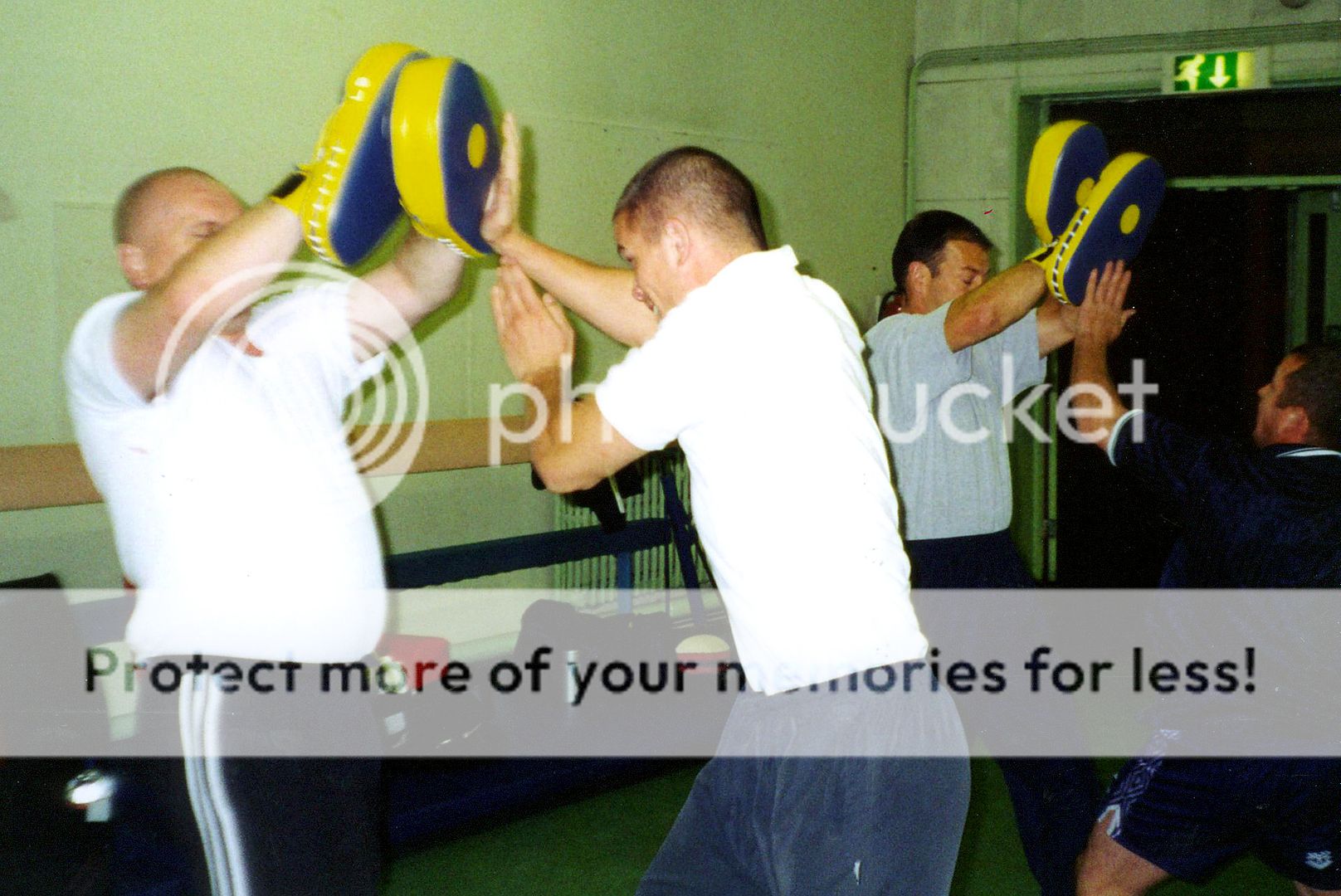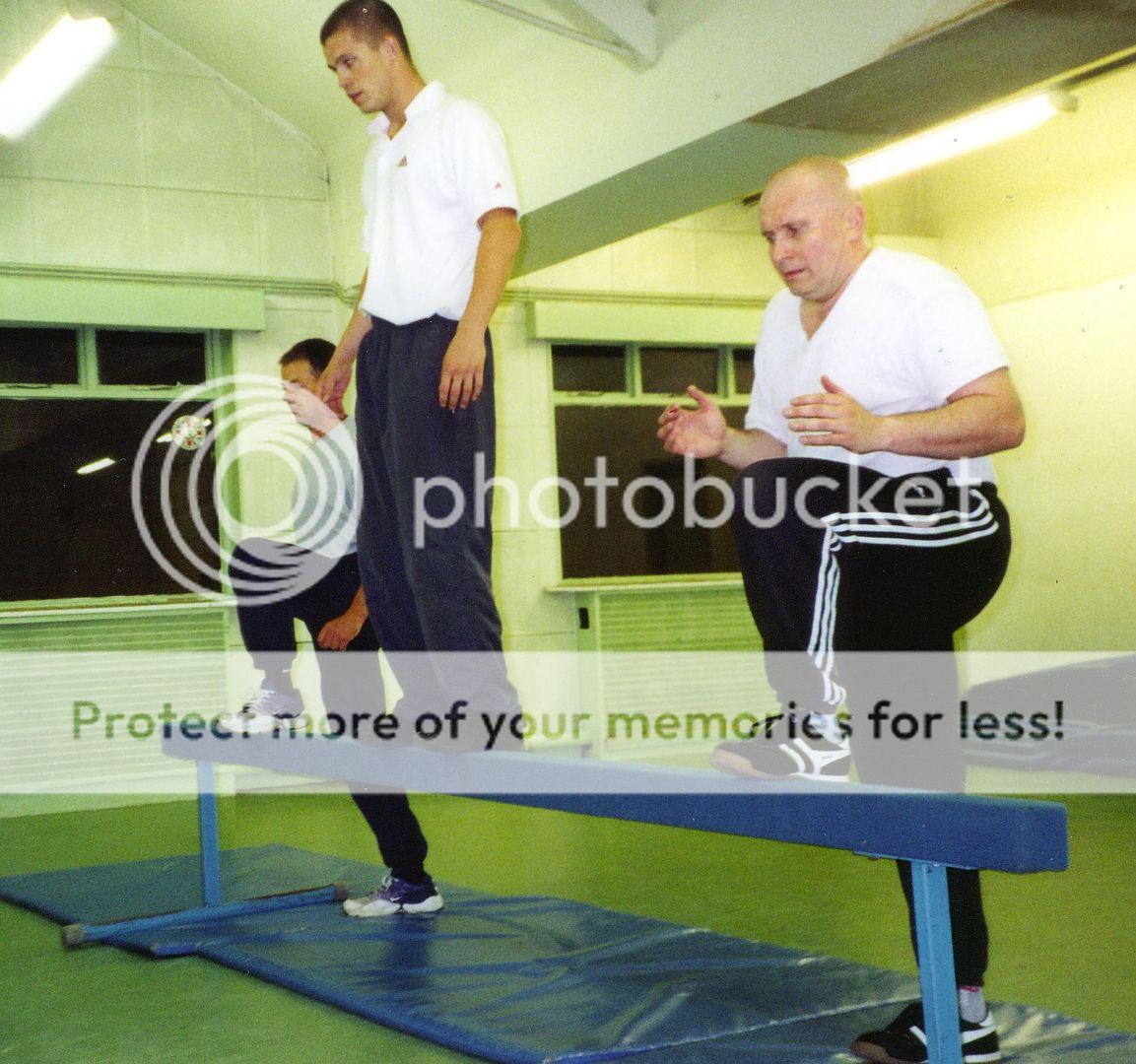TASK RELATED FITNESS TRAINING:
PART TWO: CQB CIRCUITS
By Dennis Martin
In the first part we discussed the importance of impact training on pads/mitts for realistic self-protection. Continuing the theme of utilising such training for its fitness benefit, we now discuss some specifics of creating fitness routines incorporating impact work. The main method is by use of a type of circuit training.
CQB CIRCUITSThe concept we are proposing is to use a striking technique on an appropriate impact target, preceded by an exercise designed to pre-tire the trainee. The exercise should be chosen to place loading on the striking limb, for example pushups, prior to striking with the hands. Some exercises, such as Burpees will add a cardiovascular [CV] component as well, increasing the benefits.
Arrange several “Padmen” in a line, each holding pads/mitts for a specific strike, and have the trainees run from one station to the next, do the specified exercise then attack the targets. The Padmen give verbal feedback and encouragement, and ensure that the trainees react immediately, moving from exercise to striking with no lag time.
The duration of the exercise and striking can be by time or by reps. If there is an odd number of trainees, a system used by Lofty Wiseman has the spare guy doing a series of shuttle-runs, and his speed sets the time. When he finishes the runs, it’s time to stop and he joins in on the first striking station, and the new spare guy starts running.
Rather than use words to describe a circuit we have included several photographs with this article. Thanks to members of the Liverpool Combatives Group for helping with this article. The accompanying photos show some ideas for a basic circuit, but it is important to evolve your own drills. This avoids staleness.
CIRCUIT EXAMPLES: 
First station is for pushups, as the Padmen stand ready for the next part….

…springing up from the pushups, right into Tiger’s Claws.
Next station…

Step-ups on the bar, to pre-tire the legs prior to….

Knee-strikes to the heavy pad.
Another station could be….

Specialised pushups. Here Danny does Softball pushups, which stress finger/grip strength….

using Chin-jabs as Larry holds the special target.
Another station might be...

Crawling under a beam, dragging the heavy bag...

Steve then heaves the bag over the beam. This drill is usually done for a set time, and you try to keep up the reps.
MAXIMISEAnaerobic fitness is the mirror image of Combatives, the two can’t be separated. You have a limited supply of ATP and once this is depleted your ability to deliver hard fast strikes is severely impaired. This is why we train the bodyguards for the “five second fight”, it’s all about intensity, you must put the man down. This ATP depletion must be experienced in training, and CQB circuits are the ideal vehicle for this.
When your lungs are bursting, sweat pouring, blood pounding and your body wants to give up, develop mental toughness by telling yourself to keep going, harder, faster. In a violent confrontation you can’t take a break, catch your breath....your enemy isn’t going to let you. Train to be a winner.
When you have been doing CQB circuits for a while you can add a degree of “embuggerance”. Increase the experience by including obstacles between stations (beams to crawl under, or spring over) or, by using wrist/ankle weights. Use your imagination, keep varying the exercises, use different impact targets.
 [Bodyguard course in Minneapolis. Lofty used this type of drill to hit unaccustomed muscles]
[Bodyguard course in Minneapolis. Lofty used this type of drill to hit unaccustomed muscles]There are other types of Anaerobic training to include, as well as other categories of fitness work. Swimming, skipping, weights, hill running... all good, include them in your overall training regimen, but don’t neglect the arduous anaerobic work, it really is the core of Combatives.
We will be discussing other aspects of Task-related fitness in future articles. Meanwhile, train hard.
